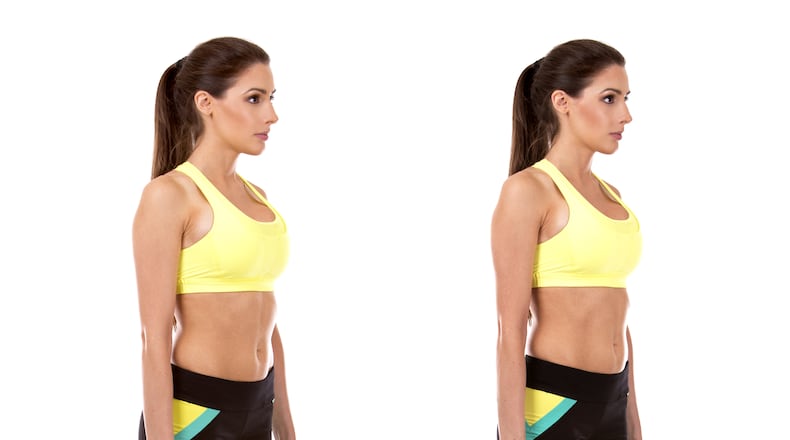To execute the Standing Calf raise, slowly lift the heels from the floor while keeping the body erect. Pause when a full range of motion has been achieved, at which point you should feel the muscles contracting. To finish, slowly lower the heels. If unaccustomed to this exercise, you can begin with one or two practice sets of 8 to 12 repetitions two to three times per week, adding sets or reps as you get stronger. You may hold onto dumbbells as shown, although when starting out this is not a necessity. Another option (not shown) is to place the balls of the feet on a raised platform, such as a stair step, which provides a stretch during the lowering phase. If choosing this option, be mindful to avoid over-stretching. Using a platform requires extra balance, and so to be safe hold onto a sturdy surface, such as the stair rail.
Tips
If cramping occurs stop and gently stretch, holding for 20 seconds or more. If unable to raise the heels through a full range of motion, this is often due to tight tendons/muscles. Here too, work on stretching, which can be done daily.
To perform a Seated Calf raise (not pictured) follow the same heel raise and lowering movements while sitting. Note that when the knee is bent, the gastrocnemius does significantly less work, while the soleus takes over. While both are strong, the soleus has greater endurance, the larger gastrocnemius has great strength capability. Therefore, it can be useful to consider including both seated and standing versions. Placing a weighted bar or dumbbells on the thighs helps to create resistance for additional strengthening.
Other variations of the Calf Raise include turning the toes in or out and/or standing on one leg instead of both to increase resistance.
Many people who try to increase the size of their calves end up overworking these muscles. Because they are already used so often in everyday activities, it is not necessary to target them every day or use heavy weights. Remember that an overworked muscle is a weaker muscle, not a stronger one. A smarter way to train is to work toward staying in good overall condition so that you can continue engaging in the activities you wish to do, and without injury.
Marjie Gilliam is an International Sports Sciences Master certified personal trainer and fitness consultant. She owns Custom Fitness Personal Training Services LLC. Send email to marjie@ohtrainer.com.
About the Author
